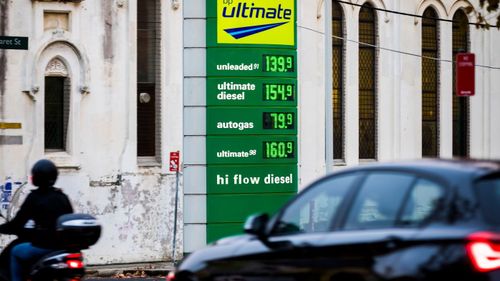Vassy Kapelos, host of CBC News Network’s Power and Politics
I ran into former Conservative staffers the other day who had worked for Brian Mulroney, some of whom had also worked for Stephen Harper.
No shocker — they’re not fans of Justin Trudeau.
But they also don’t understand Andrew Scheer and the current Conservative campaign.
“It’s a spend-a-palooza,” one former staffer remarked to me. “I just don’t get it — they’re out of control!”
He was referring to announcements the Conservatives have made over the first 10 days of the campaign: tax credits if you have a kid enrolled in a fitness or arts program, a tax credit if you use public transit, a universal income tax cut, money for medical equipment, expanding RESP grants and making parental benefits tax free.
According to The Canadian Press, the grand total for those promises? About $9 billion — a mix of spending and federal treasury money foregone. Offsetting that, the party so far has said it will review corporate subsidies and come up $1.5 billion of savings.
Don’t worry — they’re not alone. Every party is willing to spend your money like I spend at Sephora on a Saturday morning.
The Liberals will boost the Canada Child Benefit, also make parental leave benefits tax free and expand them, increase old age security, give money for startup businesses and spend about a half a billion dollars a year to create up to 250,000 more before- and after-school child care spaces.
The NDP and Greens’ promises aren’t cheap either. Take pharmacare for the NDP, coming in at $10 billion (they say they’d do it within the first year elected), and the Greens promise a guaranteed basic income, which outside estimates have pegged at more than $70 billion.

Don’t mistake the math for judgment. These are all worthy proposals for Canadians to consider and they could make a material difference to our lives (I should also point out the Conservatives and NDP provide independent costing of their proposals in real time, while the Liberals and Greens will only do so with their full platforms — date TBD).
But largely absent in the conversation up to this point is that fulfilling those promises will involve trade-offs.
“This is what we really need to think about every single announcement,” economist Lindsay Tedds said on Power & Politics last week.
Power & Politics now on Sundays.
Catch up on the latest from the campaign trail with an extra edition of Power & Politics on Sundays at 10 a.m. ET on CBC News Network, or tune in to the repeat broadcast Sundays at 5 p.m. ET.
As always, you can still watch Power & Politics weeknights at 5 p.m. ET on CBC News Network, or subscribe to the podcast version of the show for your daily political highlights.
“There’s an opportunity cost when we’re giving something up; whether it’s our money or whether the government is going to give up money… we really need to be careful, and to think about how all of these things fit together and what that means for the government’s bottom line.”
The spend-a-palooza could mean one of three things. Either the deficit gets bigger (because revenue is down or spending is up), spending gets cut or the government finds new ways to raise revenues (because no party will dare say they’re raising taxes on the average voter).
I was terrible at math (there’s a reason I’m a journalist), but even to me that’s obvious.
So what will the parties do? Will the deficit increase or will spending slow down? The either-or has informed the political discussion for the last four years and especially since Ontario Premier Doug Ford’s budget in April.
You remember it: spending slowed or was cut in a bunch of areas — and then there was a backlash and many of those decisions were reversed. Within a few months, prior to a lot of it being reversed, Ford’s popularity plummeted and the federal Liberals started using his name as much as I eat carbs — which is a lot.
The debate, if you can call it that, then became: the Liberals will spend all your money and your kids will pay for it, or the Conservatives will cut everything so your kids won’t even have pens at school.
I’m doubtful either is true, but the politics of the months following the Ontario budget have obviously affected the way this campaign is being communicated. Yes, Andrew Scheer talks about balancing the budget, but there’s no real focus on it. At each of his stump stops, there’s not much about how it would happen (yet) or where spending could slow.
Again — that’s not unique to the Conservatives. The Greens also promise to get back to balanced books, but we’re still waiting for the details. And how much are the Liberals or NDP willing to add to the deficit? Is there a limit to how much they’re willing to pile on? I have no clue because ain’t nobody talkin’ ’bout it.
Politicians have apparently made the determination it wouldn’t be popular to do so.
Power Lines
The Power & Politics Power Panelists on where the big parties will be focused this week
Amanda Alvaro president and co-founder of Pomp & Circumstance
The Liberals will be seeking as many opportunities as possible for Canadians to connect with the leader in order to air their concerns and hear from him directly. Expect the Liberals to continue to contrast their approach of progress and investment for the middle class against some of the expected Conservative cuts to services families rely on.
Rachel Curran senior associate at Harper & Associates Consulting
Conservative Leader Andrew Scheer will continue to reveal elements of his plan next week to put more money back in the pockets of Canadian taxpayers., including introducing a Universal Tax Cut for all taxpayers worth up to $850 per year and reintroducing the Children’s Fitness and Arts Tax Credits. At the same time, he will argue that Liberal leader Justin Trudeau has lost the moral authority to govern, on the heels of the bombshell “blackface” revelations this week.
Kathleen Monk principal at Earnscliffe Strategy Group
New Democrat Leader Jagmeet Singh showed this past week what authentic leadership looks like. He spoke from the heart directly to those hurt by experiences of racism. As the climate strike builds and protests happen around the globe, New Democrats will continue to show the importance of matching strong words with a commitment to real action to fight the climate crisis.
Poll Tracker Takeaway
Éric Grenier’s weekly look at key numbers in the political public opinion polls.
It will take a while for the polls to begin registering the fallout from last week’s revelation that Liberal Leader Justin Trudeau was photographed wearing blackface makeup on several occasions.
We’ll start seeing data reflecting people’s opinions over the next few days – but it could take a week or two before we can truly gauge the longer-term impact.
What’s unlikely to change is the general make-up of the electorate — and a recent poll by the Innovative Research Group takes a fascinating approach to analyzing voters.
The poll, conducted over the first week of the campaign, included a breakdown of respondents divided between those who were committed to voting for one party and those who were still considering their options.
Reading this online? Sign-up for the newsletter to get it delivered to your inbox every Sunday – then daily during the campaign.
Outside of Quebec, the poll found that 29 per cent of the electorate is unaligned — that’s the biggest single chunk of voters. These people are undecided or not yet committed to one party or another.
The next biggest group were “Core Conservatives”; they represent 17 per cent of the electorate. The next biggest group, at 13 per cent, were those classified as “Core Liberals.”
The other parties and swing voters made up smaller slices of the pie.
What’s interesting about this poll is how it shows that the electoral playing field is far more nuanced than it might seem. For instance, outside of Quebec there are as many Liberal-Conservative swing voters as there are voters considering both the Conservatives and either the New Democrats or Greens.
There are more NDP-Conservative swing voters than Conservative-People’s Party swing voters. There are twice as many Liberal-Green voters as there are Green-NDP swingers.
In Quebec, the Liberals appear to be competing for more voters with the Conservatives than with any other party. The Bloc Québécois needs to worry more about bleeding support to the Liberals or the Conservatives than to the New Democrats.
The biggest takeaway is that there are a lot of voters out there considering their options. Throughout the country, only 39 per cent of the electorate is considered “core” to one party or another. That means the rest is up for grabs — but in a way that’s not as simple as we might think.
Tap here to go to the latest poll tracker results

Ask CBC News
We’ve been hearing from voters across the country and expats around the world curious about all aspects of the upcoming federal election. Read more answers to questions we recieved this week here.
Jim Witt asks: I have a family member who has never been able to vote because of their disability. Can a caregiver vote for them?
If you want to vote at a polling place with the family member, someone else would be able to assist the family member with a disability in marking the ballot. Before you do this though, the assistant would have to swear an oath in order to protect the “secrecy of the ballot.”
You could also get your ballot sent to your home and vote by mail, which may be more comfortable for the family member with the disability. You can apply to vote by mail right now.
Elections Canada has reiterated that while you can assist someone in voting “no one can vote on your behalf.”
More from CBC Politics
‘Best response is an unqualified apology’: How politicians survive political scandals
Time will tell whether the blackface images that surfaced this week will affect Justin Trudeau at the polls, but it certainly hasn’t marked the immediate demise of his political career. What factors into surviving a political scandal? Read more here.
All prisoners have the right to vote in the federal election. Here’s how.
Prisoners clearly can’t go to a polling station, so how do they cast their ballot? And with no access to the internet, how do they know who to vote for? Here’s how it all happens.
What we know about Justin Trudeau’s blackface photos — and what happens next
From resignations to reactions, here are the questions being asked about the bombshell photos. Read the full story here.

